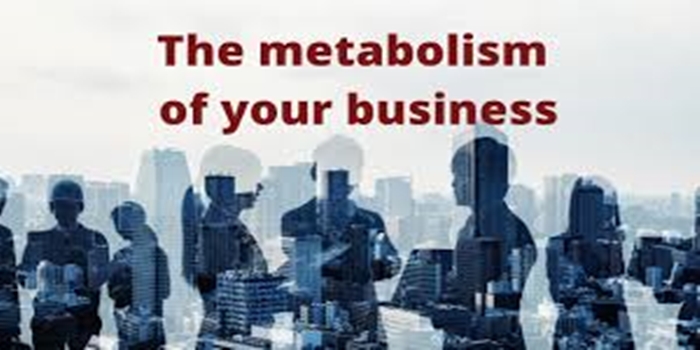In this blog, we discussed the meaning of corporate metabolism, the characteristics, the examples, and we also outlined the benefits.
Definition
The Corporate Metabolism” is a concept that draws matches between the metabolic processes of a living organism and the functions of a corporation. It highlights how a company, like a biological entity, needs to collect resources (like a business collects revenue), use them, and convert them into outputs (like a business produces goods or services) to sustain itself and grow.
The Characteristics of Corporate Metabolism:
- Resource Acquisition.
Companies need various inputs, including raw materials, capital, human resources, technology, and information.
The process of acquiring these resources efficiently and strategically is crucial for the organization’s functioning.
- Transformation Processes:
This involves the activities where the company converts its inputs into outputs.
This can include manufacturing, service delivery, research and development, or any other core function.
The efficiency and effectiveness of these processes determine the company’s output quality and cost.
- Output.
This represents the company’s deliverables to its customers or stakeholders.
Outputs can be tangible products, intangible services, information, or knowledge.
The effectiveness of the output delivery process determines the company’s market success.
- Waste Management.
Companies also generate byproducts or waste as part of their operations.
Efficient waste management is crucial for sustainability, cost reduction, and compliance with regulations.
This may involve recycling, disposal, or even converting waste into a resource.
- Feedback Loops:
Companies continuously monitor their performance and gather feedback from customers, employees, and the market.
This feedback is used to adjust resource acquisition, transformation processes, and output strategies.
Feedback loops allow the company to adapt to changing market conditions and maintain its competitive edge.
- Energy and Resource Management:
Companies need to manage their resources, including energy, materials, and human capital, efficiently.
This involves optimizing resource utilization, minimizing waste, and implementing sustainable practices.
- Adaptation and Evolution:
Corporate metabolism is not static; it evolves over time as the company adapts to changing market conditions, technological advancements, and other factors.
The Examples of Corporate Metabolism:
Resource Allocation:
How a company decides where to allocate its financial resources (money), human capital (employees), and physical assets (equipment, buildings) to maximize efficiency and profitability.
Value Chain Management:
The flow of activities a company undertakes to create and deliver value to its customers. This includes activities like sourcing raw materials, manufacturing, marketing, and customer service.
Innovation:
The process of developing new products, services, or processes to improve efficiency, reduce costs, or create new markets. This can be a type of “metabolism” as it involves converting inputs (ideas, research) into new outputs (innovated products).
Organizational Structure:
How a company organizes its internal functions and departments to optimize operations and communication. A well-structured organization can “metabolize” information and resources more efficiently.
Supply Chain Management:
How a company manages the flow of goods, information, and funds across its entire supply chain. This includes suppliers, manufacturers, distributors, and customers. A well-managed supply chain is a form of “metabolism” where inputs are transformed into finished products.
Strategic Alliances and Partnerships:
How a company collaborates with other organizations to achieve its goals, like sharing resources, technology, or expertise. This can be seen as a form of “metabolism” where external inputs are integrated into the company’s operations.
Waste Reduction and Recycling:
Companies that prioritize sustainable practices often focus on reducing waste and recycling materials, demonstrating a type of “metabolism” where resources are reused and turned into new outputs.
Data Management and Analytics:
How a company uses data to make informed decisions, optimize processes, and improve performance. Data is an input, and the insights derived from it are the output, effectively “metabolizing” data into action.
Learning and Development:
How a company invests in its employees’ skills and knowledge to improve their performance and contribute to the company’s growth. This can be seen as a form of “metabolism” where human capital is developed and transformed into greater productivity.
Adaptability and Resilience:
How a company responds to changes in the market, technology, or other external factors. A resilient company is able to “metabolize” disruptions and adapt to new conditions.
The Benefits of Corporate Metabolism:
Increased Efficiency:
A well-functioning corporate metabolism allows for the efficient conversion of resources (like revenue, capital, and talent) into outputs (products, services, and innovation). This can translate to higher profitability and reduced waste.
Enhanced Adaptability:
A strong metabolism provides the ability to respond to changing market conditions and internal challenges. Like a biological organism, a company with a robust metabolism can adjust its processes and strategies to thrive in a dynamic environment.
Improved Resource Utilization:
By optimizing internal processes, a company can leverage its resources more effectively. This can lead to better resource allocation, reduced operational costs, and improved overall efficiency.
Sustainability:
A healthy corporate metabolism fosters a sense of long-term sustainability. By optimizing resource use and adapting to changing environments, organizations can ensure their continued viability and growth.
Stronger Competitiveness:
Organizations with a well-developed metabolism are better equipped to compete in the marketplace. They can innovate more quickly, respond to customer needs more effectively, and maintain a competitive edge.
Organizational Performance:
Ultimately, a robust corporate metabolism translates to improved organizational performance. This includes increased profitability, market share growth, and enhanced employee satisfaction.
Employee Engagement and Well-being:
A healthy corporate culture that fosters innovation and collaboration can positively impact employee engagement and well-being. This can lead to a more productive and satisfied workforce.
Conclusion
Corporate metabolism, is observed as a system of interconnected processes within an organization, offers several benefits including increased efficiency, enhanced adaptability, and improved resource utilization. Understanding and optimizing an organization’s metabolism can lead to greater sustainability, stronger competitiveness, and ultimately, improved organizational performance.

